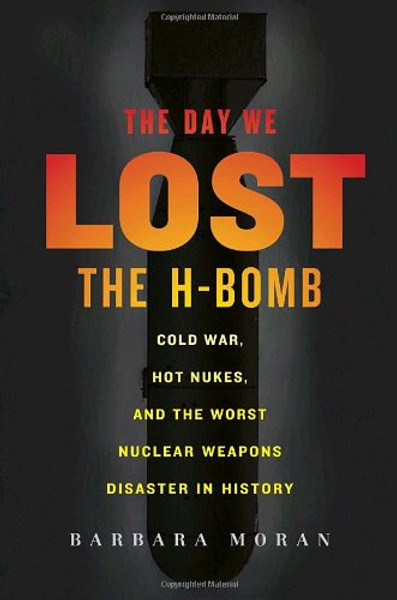Product Overview
Amazon Best of the Month, April 2009: In 1966, a mid-air collision off the coast of Spain between a fueling tanker and a B2 bomber resulted in a loss of life, strained international relations, and a PR nightmare for the US government. Not only had the crash put innocent civilians at risk from raining debris, but it also produced a much larger problem once the dust had cleared: four hydrogen bombs were now unaccounted for. The Day We Lost the H-Bomb explores an awakening to the realities of a nuclear age. Despite a handful of plutonium-grade foul-ups on our own soil, Americans were seemingly at ease with a burgeoning arsenal of nuclear weaponry. Cold War anxiety over the ever-reaching arm of Communism fueled massive increases in U.S. military spending, yet not enough attention was given to the dangers of an arms race until this fatal accident abroad. --Dave Callanan
Amazon Exclusive: An Essay by Barbara Moran
 The Swim
The SwimTwo years ago, on a chilly February morning, I found myself standing on the shore of the Mediterranean Sea. I was wearing a bathing suit, shivering in the cold and feeling like a complete idiot.
It was all Ellens fault. A few weeks earlier, before leaving for Spain to research The Day We Lost the H-Bomb, I had had lunch with Ellen Ruppel Shell, a former writing teacher. As we chatted about my upcoming trip, I told her the story of Angier Biddle Duke, the American Ambassador to Spain in 1966. After the United States accidentally dropped four hydrogen bombs near a Spanish village, Duke orchestrated a PR stunt, swimming in the chilly Med to prove that the water wasnt radioactive.
I mentioned that I was planning to visit the beach where Angie swam. Ellen looked at me and said, Well, of course you have to swim there, too. I had to admit she was right. Its always easier to write about something youve experienced firsthand.
Now, here I was on the beach. I had been anxious about the swim, searching for any excuse to get out of it. My translator had mentioned something about a jellyfish invasion of the Mediterranean, which gave me hope. But I had scoped out the beach the previous day and there wasnt a jellyfish in sight. No people in sight, either. In my few days on the coast I had seen no one in the water and hardly anyone on the beach, just a few pasty Brits and backpackers sprawled on the sand. It was, after all, February.
The next morning I got up at dawn. My plan was to sneak down to the beach without anyone seeing me. The Spanish were used to gringos acting strangely, but a dip in the Med in the middle of winter was surely a bit too far.
The beach was deserted, but I noted with alarm that a tour bus was parked beside the road overlooking the ocean. Unlike Angie Duke, my goal was to attract as little attention as possible. I took off my shirt and shorts, and stood on the beach on my bathing suit, cursing Ellen for putting this idea in my head. Where were those jellyfish when I needed them? I wondered if the tour bus was filling with old folks who now had something interesting to look at.
I took my first step in. The water was clear and cold, the bottom soft and pebbled. I took a few more steps, my feet sinking into the sand. There was a steep drop and I was suddenly up to my waist. A quick count of one, two, three and I ducked underwater. I came back up, shook my hair and tasted the salty water on my face. My job was done.
My 30-second dip in the Med, after all my anxiety, was anticlimactic. Angies swim was completely the opposite. --Barbara Moran
(Photo John G. Nikolai)






